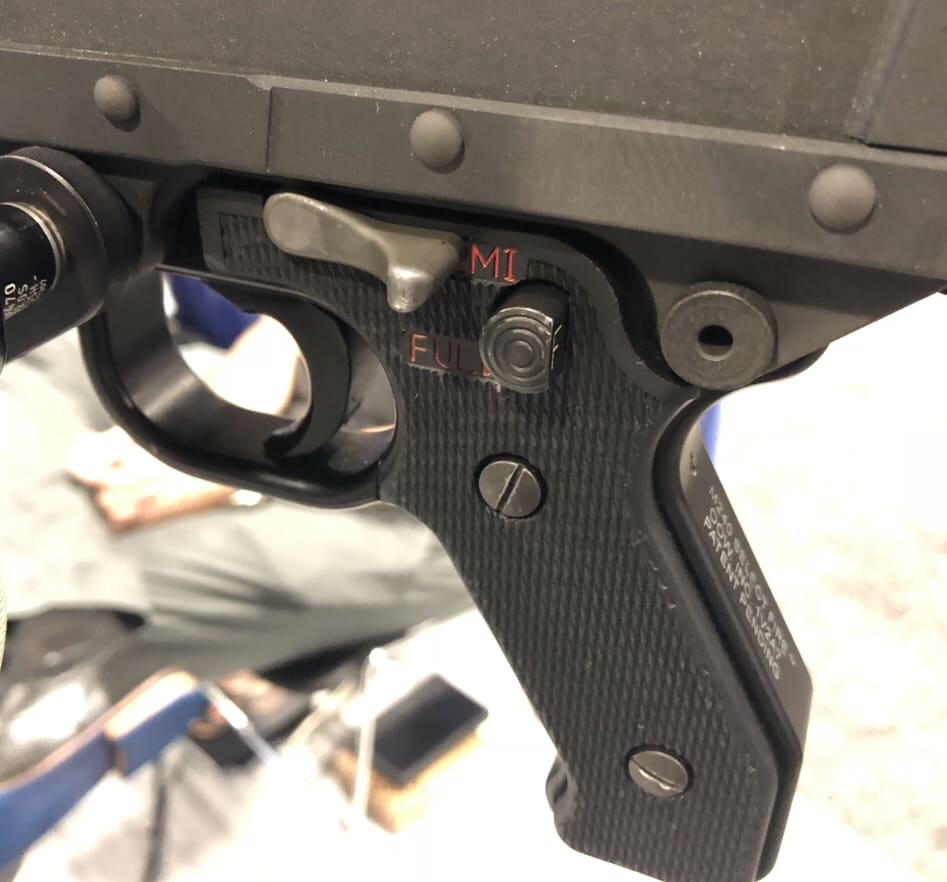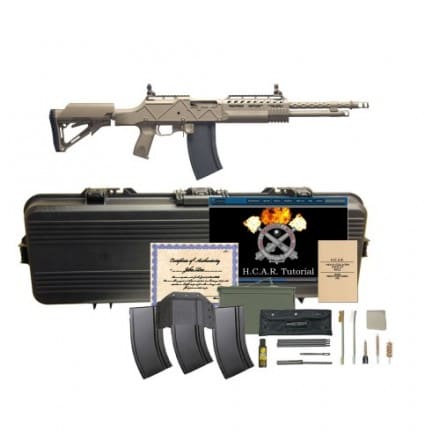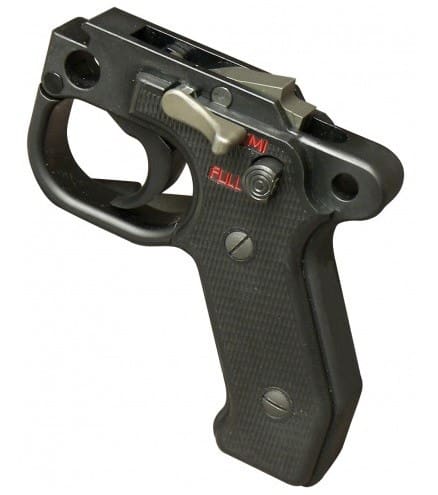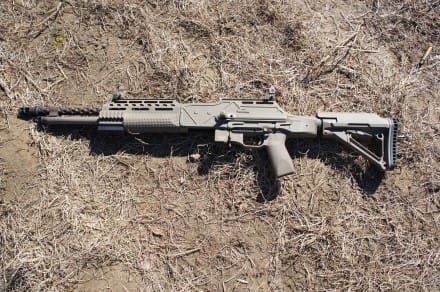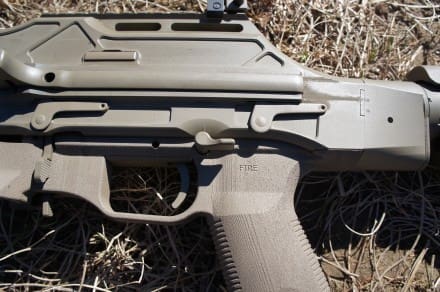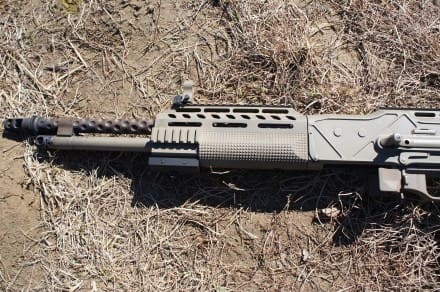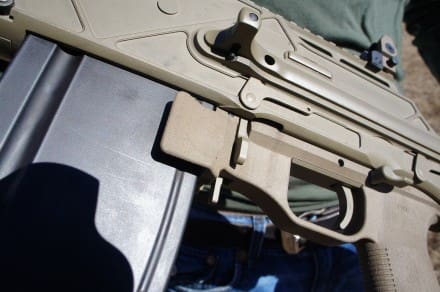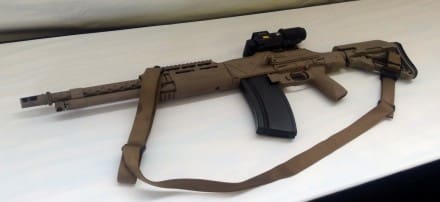
Seeing how today is Veterans Day which finds its foundation in Armistice Day that marked the end of WW I, it’s fitting to offer a story about a modern version of the 1918 Browning Automatic Rifle which first saw service in that war to end all wars. Designed almost a century ago by small arms genius John Moses Browning, it served from its inception in 1917 until the early 1970s in the US arsenal and elsewhere around the world for long after. I’d even go so far as to call the BAR the original SAW and its removal from service and subsequent capability gap led to the acquisition of the M249 SAW.

This modernized version of the BAR is known as the Heavy Combat Assault Rifle. Ohio Ordnance Works applied knowledge gained from almost 20 years of building semi-auto versions of the BAR to increase the firepower of the Infantry Squad. In fact, they’ve been working on this for a little while now. I gave the HCAR a brief mention during SHOT Show 2013.
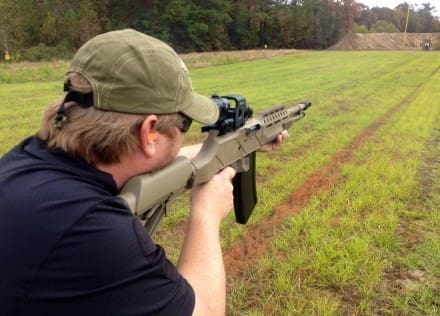
I was fortunate enough to get a chance to fire the HCAR during the Osprey Global Solutions Range Demo Day. Headed by Retired Army Lieutenant General David Grange, Osprey has opened a new facility boasting a 1500m range near Elizabethtown, North Carolina, right down route 87 from Fort Bragg.
This new variant is still chambered in .30-06 but they are considering other calibers; 7.62 is a natural fit but a few others were mentioned as well. As this is still a developmental platform, almost anything in that class of round is possible, so long as it makes sense. Even with the .30-06 you can see that recoil is quite manageable. I found it similar to a 5.56 rifle. They tell me it’s due to their new buffer. The furniture is all designed and manufactured in house from Selective Laser Sintered (SLA) 3D printed materials. OOW has also integrated Mil Std 1913 rails for sights and accessories.
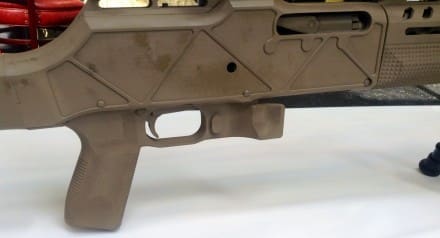
The 16″ barrel is “dimpled” with ovals to help reduce weight and improve cooling by offering additional surface area. Additionally, both prototypes were equipped with AAC flash suppressors and readily accepted the AAC suppressor. In order to make the suppressor more user friendly it was fitted with a Manta suppressor cover. Like on the original BAR design, the HCAR has an adjustable gas port. I fired both guns and observed no issues with either as over 40 different shooters firing several hundred rounds over the course of the afternoon.
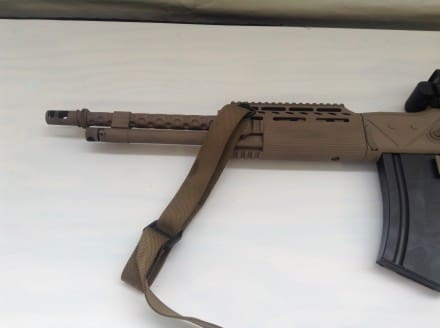
You may notice the 30 round magazine. OOW offers a 30 round BAR mag and the ones we used during the demo performed flawlessly. Granted, it was a range day, and we didn’t put them through combat conditions but I saw 5 magazines used between the two HCARs with no misfeeds. You should also take note of the magazine guide to assist with seating a magazine in the weapon.
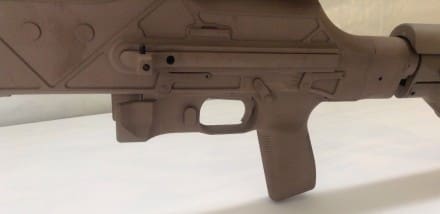
The HCAR integrates accepts Mil Spec collapsible stocks as seen here.

OOW has developed a new folding charging handle that will be included with future prototypes.
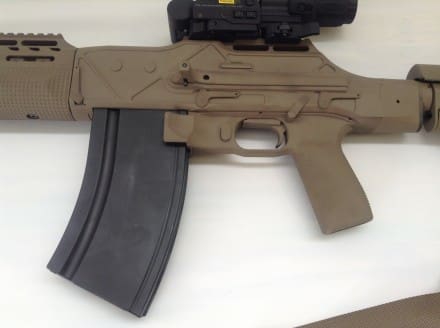
One thing I am not enamored with on this build is the selector switch. It’s classic WW I design. Twist the switch forward, toward the enemy and you are on fire, twist it to the rear, toward friendlies and it’s safe. It’s just not easy to manipulate. OOW told me that they have developed a newer switch that is a little more ergonomic but you’ll still have to remove your hand from the weapon to use it. Let’s face it, we are pretty spoiled with more modern designs.
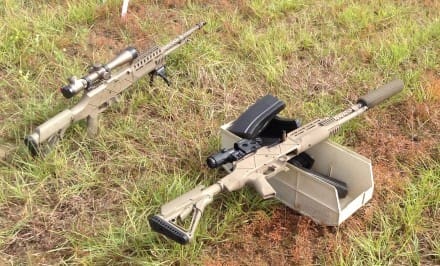
Sure, it’s still heavy at 12 lbs but considering they’ve shaved almost 8 lbs from the model it’s based on and it handles .30-06 like a champ, I’m not complaining. Also, I can live with the selector lever. All-in-all, I’m more than happy with what I’ve seen so far and look forward to the HCAR to be offered for sale.
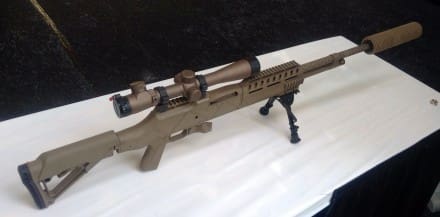
I know what’s on everyone’s mind. How much does it cost and when can I buy one? Considering their 1918A3 SLRs run $4300, I’d say that the HCAR will be somewhere in that ballpark. As for when? That remains to be seen. OOW continues to refine the design. Hopefully, we will see more from Ohio Ordnance Works at SHOT Show 2014.
